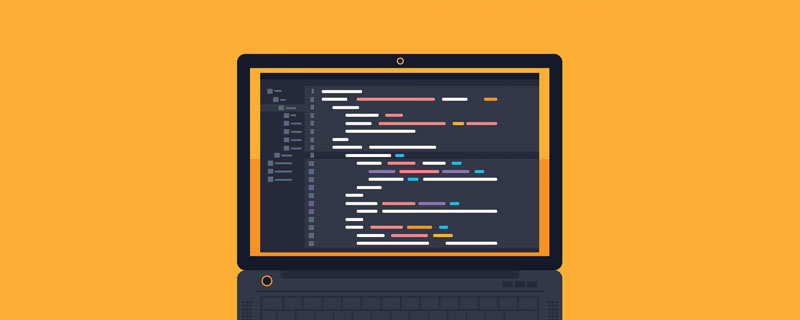A teaching tool
To see the original file of the information displayed in the current window of your browser, select the View Source (or equivalent) option in the browser menu. The content of the file and all HTML markup will be displayed in a in a new window.
This is a great way to learn to use HTML and master techniques and constructs. Of course, the HTML you see may not necessarily be technically correct. When you are familiar with HTML and have read a lot about it Reference material, you will be able to differentiate between "good" and "bad" HTML.
Remember that you can save the HTML-encoded source file and use it as a template for your web pages, or modify it for other purposes .
HTML tag
HTML
This element indicates that your file contains HTML-encoding information. The file extension .html also indicates that the file is an HTML document and must be used. (If your system is subject to 8.3 filename restrictions( For example., LeeHome.htm), you can use .htm as the extension.)
HEAD
The head element head is the first part of your HTML-encoded document that contains the title. The title is included as part of your browser window Displayed (see below).
TITLE
Title The title element contains the title of your document and serves as a global context to identify its content. The title is usually displayed somewhere in the browser window (usually at the top), rather than in the text Area. The title is also used for display in the hotlist or bookmark list, so the title should be descriptive, unique, and relatively concise. The title is also used in the WAIS service to search the server.
For example, you might include a short book title in a chapter: NCSA Mosaic Guide (Windows): Installation. This title describes the name of the software, the platform it is used on, and the content of the chapter. It is better than simply putting the document Called installation. Much better. Generally your title should be no longer than 64 characters.
BODY
The second and largest part of the HTML document is the body, which contains the content of your document (the part that is displayed in the text area of your browser window) . The tags introduced below are used in the body of HTML documents.
Headings
HTML has six levels of heading fonts, numbered from 1 to 6, with size 1 being the smallest. The heading font is displayed larger or bolder than the normal text font. Each The first heading font in a document should be marked
.
The syntax of the heading font element is:
heading font text
where y is a number from 1 to 6, Specify the heading font level.
Don’t skip heading font levels throughout your document. For example, don’t start with a first-level heading () and then follow it with a third-level heading ().
Paragraphs
Unlike documents in many digital processors, line breaks in HTML files are unimportant. You don't have to worry about the length of the lines in your text (preferably no more than 72 characters). In your source file any Where line breaks can be used, multiple whitespaces are overlapped into one whitespace in your browser.
In the example given in "Minimal HTML Document" the encoding of the first paragraph is
).
Paragraphs
Unlike documents in many digital processors, line breaks in HTML files are unimportant. You don't have to worry about the length of the lines in your text (preferably no more than 72 characters). In your source file any Where line breaks can be used, multiple whitespaces are overlapped into one whitespace in your browser.
In the example given in "Minimal HTML Document" the encoding of the first paragraph is
Welcome to the world of HTML.
This is the first paragraph.
While short it is
still a paragraph!
There are line breaks between lines in the source file. Web browsers ignore these line breaks and only encounter another< Start a new paragraph only after the ;p> tag
Important: You must specify a paragraph with the
element. The browser ignores any indentation or blank lines in the source file. If there is no
element, The document will be treated as one large paragraph. (One exception is text marked as "preformatted," described below.) For example, the following output will be exactly the same as the first HTML example:
< ;H1>Level-one heading
Welcome to the world of HTML. This is the
first paragraph. While short it is still a
paragraph!
And this is the second paragraph.
To maintain the readability of HTML files, the title font should be on its own line, add one or two blank lines before starting a new section, and separate paragraphs with blank lines (In addition to using the
tag). This extra whitespace will be useful when you edit the file (but your browser will ignore this whitespace because it has its own rules about whitespace, independent of those in your source file.
Note: The closing tag
tag, it thinks that the previous paragraph ends here.
Use
and
as paragraph markers allow you to center a paragraph by using the ALIGN=alignment attribute in the source file.
This is a centered paragraph. [See output below Form]
This is a centered paragraph.
The above is the content of HTML Beginner’s Guide (2). For more related content, please pay attention to the PHP Chinese website (www.php.cn)!
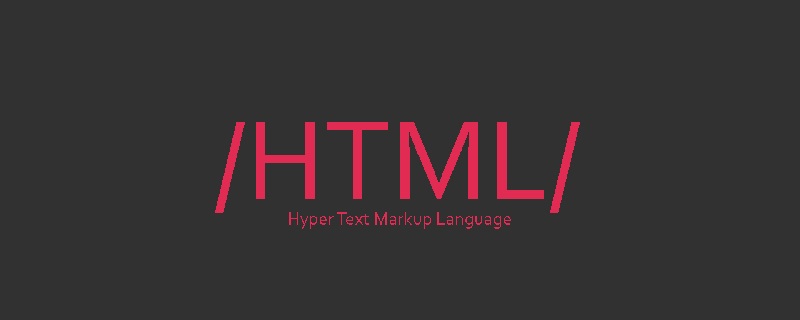 HTML超文本标记语言--超在那里?(文档分析)Aug 02, 2022 pm 06:04 PM
HTML超文本标记语言--超在那里?(文档分析)Aug 02, 2022 pm 06:04 PM本篇文章带大家了解一下HTML(超文本标记语言),介绍一下HTML的本质,HTML文档的结构、HTML文档的基本标签和图像标签、列表、表格标签、媒体元素、表单,希望对大家有所帮助!
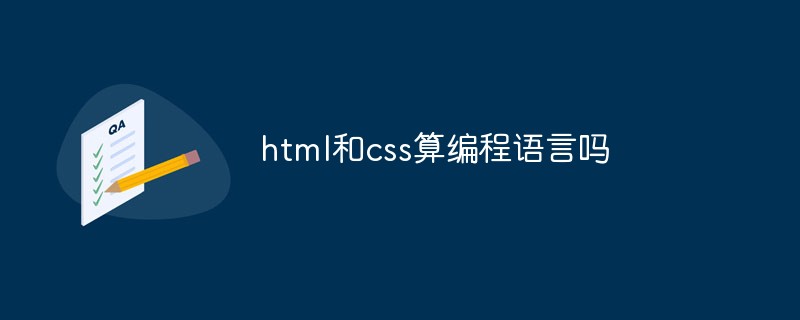 html和css算编程语言吗Sep 21, 2022 pm 04:09 PM
html和css算编程语言吗Sep 21, 2022 pm 04:09 PM不算。html是一种用来告知浏览器如何组织页面的标记语言,而CSS是一种用来表现HTML或XML等文件样式的样式设计语言;html和css不具备很强的逻辑性和流程控制功能,缺乏灵活性,且html和css不能按照人类的设计对一件工作进行重复的循环,直至得到让人类满意的答案。
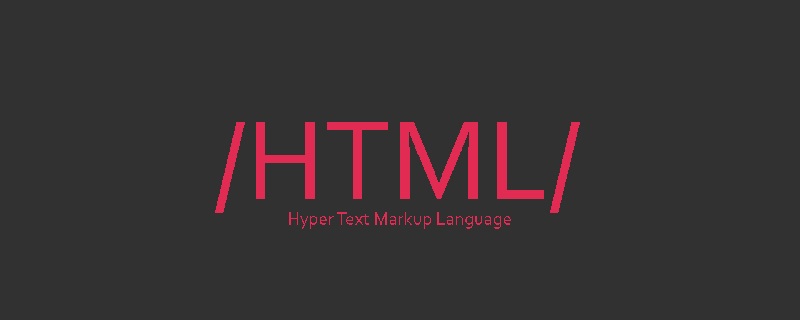 web前端笔试题库之HTML篇Apr 21, 2022 am 11:56 AM
web前端笔试题库之HTML篇Apr 21, 2022 am 11:56 AM总结了一些web前端面试(笔试)题分享给大家,本篇文章就先给大家分享HTML部分的笔试题(附答案),大家可以自己做做,看看能答对几个!
 HTML5中画布标签是什么May 18, 2022 pm 04:55 PM
HTML5中画布标签是什么May 18, 2022 pm 04:55 PMHTML5中画布标签是“<canvas>”。canvas标签用于图形的绘制,它只是一个矩形的图形容器,绘制图形必须通过脚本(通常是JavaScript)来完成;开发者可利用多种js方法来在canvas中绘制路径、盒、圆、字符以及添加图像等。
 html中document是什么Jun 17, 2022 pm 04:18 PM
html中document是什么Jun 17, 2022 pm 04:18 PM在html中,document是文档对象的意思,代表浏览器窗口的文档;document对象是window对象的子对象,所以可通过“window.document”属性对其进行访问,每个载入浏览器的HTML文档都会成为Document对象。
 html5废弃了哪个列表标签Jun 01, 2022 pm 06:32 PM
html5废弃了哪个列表标签Jun 01, 2022 pm 06:32 PMhtml5废弃了dir列表标签。dir标签被用来定义目录列表,一般和li标签配合使用,在dir标签对中通过li标签来设置列表项,语法“<dir><li>列表项值</li>...</dir>”。HTML5已经不支持dir,可使用ul标签取代。
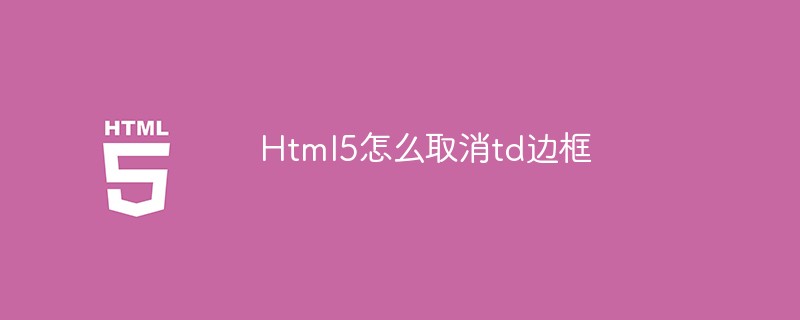 Html5怎么取消td边框May 18, 2022 pm 06:57 PM
Html5怎么取消td边框May 18, 2022 pm 06:57 PM3种取消方法:1、给td元素添加“border:none”无边框样式即可,语法“td{border:none}”。2、给td元素添加“border:0”样式,语法“td{border:0;}”,将td边框的宽度设置为0即可。3、给td元素添加“border:transparent”样式,语法“td{border:transparent;}”,将td边框的颜色设置为透明即可。


Hot AI Tools

Undresser.AI Undress
AI-powered app for creating realistic nude photos

AI Clothes Remover
Online AI tool for removing clothes from photos.

Undress AI Tool
Undress images for free

Clothoff.io
AI clothes remover

AI Hentai Generator
Generate AI Hentai for free.

Hot Article

Hot Tools

Atom editor mac version download
The most popular open source editor

mPDF
mPDF is a PHP library that can generate PDF files from UTF-8 encoded HTML. The original author, Ian Back, wrote mPDF to output PDF files "on the fly" from his website and handle different languages. It is slower than original scripts like HTML2FPDF and produces larger files when using Unicode fonts, but supports CSS styles etc. and has a lot of enhancements. Supports almost all languages, including RTL (Arabic and Hebrew) and CJK (Chinese, Japanese and Korean). Supports nested block-level elements (such as P, DIV),

SublimeText3 Linux new version
SublimeText3 Linux latest version

VSCode Windows 64-bit Download
A free and powerful IDE editor launched by Microsoft

ZendStudio 13.5.1 Mac
Powerful PHP integrated development environment





